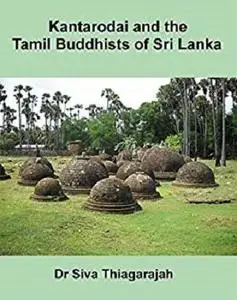Kantarodai and the Tamil Buddhists of Sri Lanka by Siva Thiagarajah
English | February 28, 2015 | ASIN: B00U52L926 | 66 pages | AZW3 | 1.37 MB
English | February 28, 2015 | ASIN: B00U52L926 | 66 pages | AZW3 | 1.37 MB
The political situation in Sri Lanka have polarised the Sinhala and the Tamil population so much so, that the Tamils cannot even envisage that a good percentage of their forefathers were Buddhists in the past. To the Sinhalese Buddhism among Tamils is a non-entity. For about a thousand years – from the third century BCE until the seventh century CE – both Buddhism and Hinduism were practiced by the Tamils in Sri Lanka.
The village of Kantarodai in Jaffna, about 3.2 sq.km in extent is in itself an archaeological mound situated at a higher elevation than the surrounding areas, with a heavy concentration of artefacts. The statues of Buddha found at Kantarodai exhibit the South Indian tradition of sculpture-art suggesting that Buddhism arrived here from South India. The upper limbs, lower limbs and the torso of the statues were sculptured separately and were joined up together in the Amaravati style. This style also found in the early Anurahapura statues, is different from the North Indian style found in most of the later Buddha statues of South Sri Lanka.
The three greatest Pali scholars of the Common Era – the three grand masters of Theravada Buddhism – were: (1). Acharya Buddhaghosa, (2). Acharya Buddhadatta, and (3). Acharya Dhammapala. They wrote treatises and commentaries on Tripitaka; explained and expounded the philosophies of Buddhism and the doctrines of the Buddha, and paved the way for the spread of this philosophy to countries like Burma, Tibet, Cambodia, China, Japan, Korea, Java, Sumatra, Siam and other places. Their joint output of Buddhist religious literature is truly mind-boggling.
The fact that all these three scholars were Tamils born in Tamil Nadu, learnt the Pali language, became proficient in that language, mastered the teachings of the Buddha, and became the Torch bearers of the Tipitaka is something many of the modern historians of Sri Lanka are not aware of.
Dr Thiagarajah presents powerful well researched arguments to present his case.



